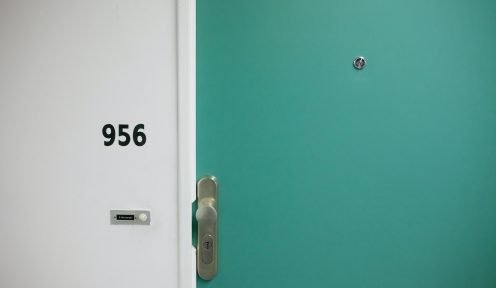
10.05.2021
Procedural Exceptions: “Res judicata”
What is the procedural exception of res judicata? What is its regulation? What is its scope? What is its purpose? What is its procedural processing? What are its requirements? What are its effects? Material res judicata? Formal res judicata? What is its relationship with lis pendens? And with prejudiciality?
 Por
Osa Otero, Sandra
Por
Osa Otero, Sandra Concept
Res judicata is constituted as the direct consequence of the final judgment or resolution in a judicial proceeding. This procedural institution responds to the constitutional requirement of the unwavering principle of legal certainty and effective judicial protection. Arts. 9.3 and 24.1 CE respectively. A question that we will see when we enter into the analysis of its grounds.
Unfortunately, this quiz has a limited amount of entries it can recieve and has already reached that limit.
Regulation
The procedural exception of res judicata is regulated in arts. 416 and following LEC (Ley de Enjuiciamiento Civil. Civil Litigation Act). In addition to other provisions of the same body of law.
Judicial procedure
Res judicata, as a procedural exception, must be opposed by the defendant or plaintiff in a counterclaim. It will be so even when in a negative or exclusionary sense can be appreciated ex officio. (Arts. 414.1.II and 412 LEC).
In a positive or prejudicial sense, it must be alleged by the plaintiff or by the defendant. This is so, since here it is not configured as an issue that prevents or hinders the continuation of the process. It simply conditions it.
By provision of art. 405.3 and 407.2 LEC, it will be in the answer to the claim where the procedural exceptions must be raised. They will be examined at the Preliminary Hearing, and the Court must decide in accordance with 416.1.2.2.2ª.
In its negative or excluding effect:
If the Court considers its concurrence, it will terminate the Hearing and will issue an order of dismissal, within a period of 5 days.
In its positive or prejudicial effect:
It will not give rise to dismissal in accordance with the provisions of art. 222.4. LEC. But it materializes the effect of binding force coming from the final judgment in the previous process, with respect to the subsequent one.

Si te ha interesado este artículo no dudes en leer:
Cassation appeals in the civil jurisdiction
Formal Res Judicata and Material Res Judicata
When talking about res judicata, two aspects must be differentiated. On one hand, it produces the procedural effects, of a formal nature, which are proper to it. On the other hand, it has material effects for the litigants, who will not be able to obtain another decision on what has been previously resolved.
Formal res judicata: this is the special legal status that affects matters in which a final judgment has already been issued. Also called resolution with the force or authority of formal res judicata.
In other words, the Court in the subsequent proceeding may not hear the matter because it has been tried in a previous lawsuit. In order to be upheld, the subject matter of both proceedings must be identical (art. 222.1 LEC). This requirement is jurisprudentially referred to as substantial identity.
In fact, in order for the exception of material res judicata to be upheld, there must be a triple identity. Identity of subjects, identity in the petition (petitum) and identity in the cause of action (causa petendi). Said concurrence will be elucidated after comparing the object of the first and subsequent proceedings that are susceptible of being affected by res judicata.
Art. 207 LEC, deals with final and firm resolutions and formal res judicata. It provides that the finality of the judicial decision will entail the declaration of res judicata on the following decisions:
- Those that put an end to the first instance and those that decide the appeals filed against them.
- Those against which no appeal is possible.
- Those not appealed and which, due to the passage of time, become final.
- Those against which the appeals were ineffectively appealed and were rejected because the requirements were not fulfilled.
- Those before which an effective appeal was filed, however, the process is subsequently abandoned or some formal requirement is not complied with.
Material res judicata: as the binding effect that the judgment of certain final judicial decisions has on other proceedings.
Regarding the latter, the final judgment or resolution produces two effects:
Negative, preclusive and excluding:
The effect of which prevents an issue that has been debated in one proceeding from being debated again in a subsequent proceeding. It also protects its reproduction or reconsideration.
Positive or prejudicial:
Whose effect is the obligation for the Judge of subsequent process to accept the previous firm decision. The connection between the new claim exercised and the previous one, we insist, already firm, must respect the sense of its declaration. And, consequently, to resolve in the same sense of its precedent.
It is important to know that art. 200 LEC does not limit the objective scope of res judicata. It includes the requests of the claim, of the counterclaim and those of compensation of amounts and nullity of legal transactions. (Art. 222.1 LEC).
Article 400 LEC
The controversial art. 400 LEC, warns of the circumstances that must be present in order to be able to appreciate identity in the cause of action. Not only the facts, grounds or legal titles invoked in the previous proceeding must be taken into account. But also those that had the opportunity to be invoked in that proceeding. Including even those of a different legal title with respect to the main one, and which constituted the basis of the petition.
This imposition falls on the litigants to base their claims on all the facts, grounds or legal titles. Extending to those that are known or are susceptible of invocation at the time of their interposition. So that they are substantiated in the same proceeding, without there being any reservation for their knowledge in a subsequent proceeding. The reason? The effects of res judicata will apply to all those that have been alleged. And in the same way, on those that could have been alleged and were not alleged in a previous proceeding. Order of the Provincial Court of Madrid No. 215/2006, Section 10, of May 18, appeal No. 846/2005.
However, it should be clarified that what is referred to in art. 400 LEC, is not really in itself a res judicata. But it does share the same effects.
Basis of res judicata
Its basis, in synthesis, is threefold:
- To avoid contradictory resolutions in parallel proceedings.
- The materialization of the non bis in idem principle. In other words, to prevent the defendant from being tried again for a cause that has already obtained a final decision.
- The preservation of legal certainty, an inspiring principle of our legal system and effective judicial protection. Since it is necessary to provide certainty in the application of the law. In this case, of not prolonging indefinitely legal conflicts over identical controversies and, therefore, originating repeated resolutions.
Closely related to its purpose is the configuration of the aforementioned art. 400 LEC, the justification for which is found in the explanatory memorandum.
Relationship with Prejudiciality and Litispendency
Both litispendence and prejudiciality are procedural exceptions, which are closely related to res judicata.
In order to avoid being lengthy, we will not talk about their concepts and requirements, but rather about their effects. For a more detailed knowledge, it would be advisable to consult the entries that we have exclusively dedicated to them.
In the case of litispendence, it pursues the same purpose and the effect it produces is very similar. That is, to prevent what has already been judged from being judged again in a subsequent process.
The distinction between one and the other depends on the moment of its allegation and, therefore, its appreciation. That is, they have a different time frame. The litispendence operates if in the previous process, i.e., the first one, no final judgment was handed down. And, res judicata, as we have already seen, when there is a final judgment.
Regarding the prejudiciality, it covers issues related or closely related to the merits of the case itself. It can be alleged ex officio or at the request of a party, and its resolution is necessary in order to continue or not with the process. That is to say, to resolve the subject matter of the proceeding where this procedural exception has been raised.
Conclusions
In summary, the direct effects of res judicata are as follows:
- That, the Courts cannot dictate on the same issue, new resolution that contravenes the one dictated in another process. In addition, subsequent decisions must respect the content of that decision when ruling on other issues.
- The litigants may not exercise claims on the same issue already tried. Nor other subsequent claims that imply modifying or taking a different meaning from the one already resolved by the previous one.
On some occasions, its scope is exclusionary or negative, since what has already been resolved excludes a subsequent proceeding.
On other occasions, it is positive or prejudicial. Since it determines that the resolution on the merits of a subsequent case respects what has already been resolved in the previous final judgment.
If this article has been of interest, we also suggest you to read the following article published on our website: Execution and Garnishment
Contacto No te quedes con la duda, contacta con nosotros. Estaremos encantados de atenderte y ofrecerte soluciones.












